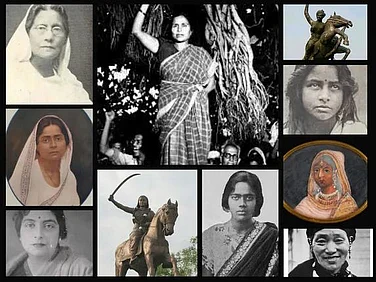A Distinct Colonial Legacy
The emergence of India as a great nation is a complex web of history and diverse stories that must be told as the nation celebrates another year of independence. Although it feels like a culmination of British rule in most of India on August 15, 1947, this was not the case with all and for some, it was a different journey altogether. In this context, the freedom fight of Goa as a natural narrative comes to my mind as a tale that requires focus in the light of this particular day of national pride.
The Roots of Difference
Today, a small territory located on the coast of the Indian Ocean known as Goa was still under Portuguese rule even after the British left India. The event began only in 1961, two years before the Indian premier’s writ ran in the territory its liberation possesses a unique story of struggle, multiculturalism, and geopolitics that makes it stand apart from India’s larger freedom movement.
The gist of the phenomena that make Goa unique is deeply rooted in the fact that the state remained a colony of Portugal from 1510. As an outcome of nearly half a millennium of Portuguese colonization, Goan society has been baptized with a rich synthesis of Indian and European models. This social blend made it even rather difficult for many Goans to define their identity and the aspect of independence. Some were eager to join the Indian Union while the others who had been influenced by Portugal were a bit reluctant.
The Early Struggle
Initially, during the freedom struggle in Goa, the people of Goans were inspired by the ideas of non-violent resistance of Mahatma Gandhi. Civil disobedience movements were led by persons such as Ram Manohar Lohia and Tristão de Bragança Cunha while supporting civil rights and integration with the Indian Union. However, the Portuguese response was largely oppressive, resulting in the arrest and banishment of many freedom fighters.
Intensification of the Movement

While the rest of India was rejoicing in freedom, so was the fight in Goa getting tougher. The 1960s were marked by the emergence of non-violent forms of civil disobedience as well as armed struggle. Organizations such as the Azad Gomantak Dal indulged in cross-border raids on Goa, while the internal unrest persisted. Soon after the outbreak of the conflict, under the leadership of Prime Minister Jawaharlal Nehru, the Indian government adopted the policy of diplomacy expecting that it would force Portugal to Quit Goa without resorting to the war.
However, Portugal, under the dictatorship of António de Oliveira Salazar did not budge an inch. Salazar argued that Goa was not a colony per se but a province of Portugal, a view antithetical to the decolonial process taking over the world. This stubbornness ultimately pushed India to act and make a decision that was almost a complete break from Mahatma Gandhi’s passive resistance tactics.
Operation Vijay: The Final Push for Freedom

Having grown impatient with Indian demands for permission to use Goan airspace and facilities, on December 19, 1961, India began ‘Operation Vijay’- the military takeover of Goa. The operation only took 36 hours and encountered only a small resistance, thus bringing an end to over 436 years of Portuguese colonization. Though this action was much appreciated within India, it created a political furor on the international level. Many countries including Portugal, stopped diplomatic relations with India while other Western nations condemned the use of force.
The liberation of Goa also brought up issues about the sovereignty of Azad and some of the issues raised include the use of force when solving colonial issues and the formation of a national identity. This also emphasized how a region that had a rather different experience under British rule could be incorporated into the larger Indian narrative.
After the liberation, Goa had the challenge of political and cultural assimilation with the other parts of India. It was initially administered as a part of Union Territory and acquired the statehood only in 1987. This gradual process paved the way for the protectorate’s smooth incorporation into the framework of the Indian federal structure while at the same time maintaining a significant portion of its distinct Goan culture.
A Lesson for Modern India
The idea of the fight for independence in Goa being different from other regions of India adds a layer to historical knowledge. It underscores the subtleties of colonialism, the difficulties of assimilation, and the tough decisions that are made in the process of knitting a nation. While we celebrate India and its freedoms by hoisting the tricolor and singing the national anthem, let us not forget the freedom fighters of Goa and others who carried forward the freedom struggle even after 1947.
Thus, the experience of Goa’s path to liberation, its specific dates and problems, indicates the different and very strong starting of the Indian spirit. It also makes a recognition of the fact that another strength of our nation does not depend on resemblance, but inclusion, on the capacity to bind together people with different stories into one narrative. Today, we celebrate not just the freedom that this country achieved in 1947 but the day-to-day construction of our great republic that prevails.

















